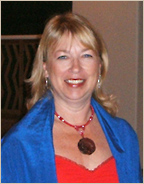My first trip to Africa was in May, 1994, when a humanitarian aid group, ADRA, sent me to Nairobi to lead their communications efforts during the Rwanda genocide.
We worked out of Nairobi, Kenya, because that’s where the press was centered. We also went to a refugee camp in Burundi, which neighbors Rwanda.
I was in Africa for three weeks and I left before the war was over. When it ended, I had an incredible ache to return to East Africa and go to Rwanda.
Africa had kept a piece of my heart and my life changed forever with that trip.
I have made seven or eight trips to Africa since then, to Ghana, South Africa, Swaziland and many more trips to Nairobi, but I never made it to Rwanda.
I read everything on Rwanda. I watch all the movies and TV shows. I volunteer to do training and mentoring through the Peace Through Business program (www.ieew.org), which works with women entrepreneurs from Rwanda and Afghanistan.
Finally, I was able to close the loop and went to Rwanda. It was only a two-day trip, but having the opportunity to go, I had to grab at the chance even though it was far too short.
Called the land of 1,000 hills, the capital city of Kigali is beautiful with so many parks and open, green areas, and most houses and buildings built on the side of hills (giving almost everyone gorgeous views).
I met the three women I have been involved with mentoring through Peace Through Business. Deborah Kakoma has a brand strategy business, Chantal Zirim is working on opening a juice bar and Honorine Mugorewase has a hotel/apartment building which I was able to see and tour.
I also met Chantal’s and Honorine’s families which was such a treat. Deborah took me to the new Film Institute and to a poetry slam. As someone said, I am living my bucket list!
I also spoke to a gathering of about 30 Peace Through Business graduates. Many of the women I have met before and call friends, as I have done training for the program the past four years. Their enthusiasm for business, soaking up new ideas and experiencing the new concept of networking is inspirational and one of the things that keeps me going through difficult times.
Deborah introduced me to Rose Kabuye. When commenting on all the greenbelts and parks in Kigali, she said, “Thank you. I like to think I had something to do with that.” Rose, who had been just another woman business owner that I enjoyed meeting and talking to at lunch, was now larger than life.
She told me some of her background, which I have augmented with her Wikipedia entry. She is a retired Lieutenant Colonel in the Rwandan Army and remains the highest ranking woman ever to serve in her country's armed forces. She is currently working in the private sector as Chief Executive Officer of Virunga Logistics and Startech Limited but is best known for her work as a freedom fighter in the liberation of Rwanda from 1990 through 1993. She subsequently became Mayor of Kigali City, Rwandan Chief of State Protocol, and a member of the Rwandan parliament. Because of her participation in the liberation struggle, she was awarded The Rwandan National Liberation Medal and the Campaign Against Genocide Medal.
Now as a board member on the Rwanda women entrepreneurs group, she hopes to encourage women to get involved politically at their local community levels.
I could have talked to her all day. Be sure to Google her and look at the Wikipedia entry on her. I have only told a small, small part of her story.
I also bought more items for Up from the Dust from another Peace Through Business graduate, Allen Joy Mbabazi (more in another upcoming blog). Saudah Nalule treated me at her Spa and Salon to the most incredible facial I have ever had and Immy Kamarade sent me home with fresh roasted coffee from her business. Immy was recently named the President of Rwanda’s women’s chamber of commerce.
Chantal showed me the real “Hotel Rwanda.” Honorine took me to the Kigali Genocide Memorial. Besides many mass graves, there is an outstanding exhibition, which goes through the history of Rwanda and what led up to the genocide. It is a powerful presentation and should be seen by all.
I did not realize at the time that Honorine lost her parents and family in the genocide and spent three months in a refugee camp in Burundi. It must have been difficult for her to be there with me. Afterwards, I got to meet three of her four children, her husband and see her new business. She is a great example of how Rwanda has worked towards recovery (I think recovered is still too strong of a word) in a short 17 years since the genocide.
My main thought after going to the Memorial is how embarrassed the international community must be at letting this genocide happen. It could have been stopped. At the least, it should not have lasted as long as it did.
The Memorial also details other genocides. The world said it would learn after World War II and the genocide of the Jews at the hands of Hitler. But it is clear that we did not.
And now it is clear how much we have to learn from Rwanda.



